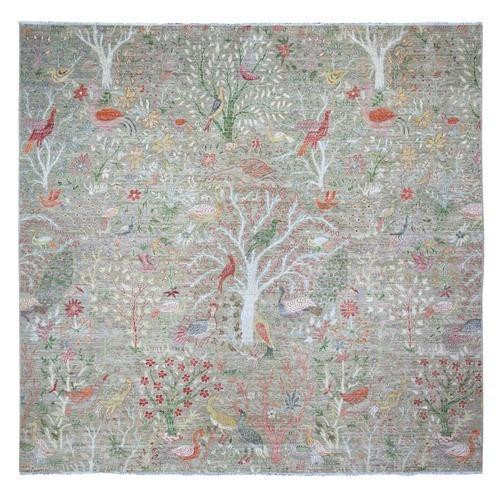Persian handmade rugs are much more than mere home decor—they are a testament to centuries of artistry, cultural heritage, and unparalleled craftsmanship. Renowned worldwide for their intricate designs, vibrant colors, and exceptional quality, Persian rugs continue to captivate collectors, interior designers, and homeowners alike. In this article, we delve into the fascinating world of Persian handmade rugs, exploring their rich history, the meticulous weaving process, and why they remain a symbol of luxury and elegance in today's homes.
The History Behind Persian Handmade Rugs
Persian rugs, often referred to as "Persian carpets," trace their origins to the ancient civilizations of Persia (modern-day Iran), where weaving was a highly respected art form. Dating back to the 5th century BC, Persian rugs have been woven for centuries, and their designs have evolved in response to the cultural, religious, and political changes within the region. Initially created for the royal courts, these rugs became symbols of wealth and power, often used to adorn palaces and mosques.
Over time, different regions of Persia developed their own distinct styles and motifs, such as the intricate floral patterns of Tabriz, the geometric designs of Isfahan, and the bold, tribal-inspired patterns of Kurdish and Baluchi rugs. Today, the art of weaving these rugs continues to thrive, with weavers following centuries-old techniques passed down through generations.
The Craftsmanship: The Making of a Persian Handmade Rug
Creating a Persian handmade rug is a labor-intensive process that requires both skill and patience. The craftsmanship involves several stages, each executed by expert artisans who specialize in specific tasks.
Design and Planning: The first step in making a Persian rug is the design. Traditionally, patterns are created by hand-drawing the design on paper. The designs often feature elaborate floral motifs, medallions, or geometric patterns, with each region in Persia offering its own interpretation. The design is then transferred onto the rug by counting the knots.
Choosing the Materials: The quality of materials used in weaving is critical to the rug's longevity and appearance. Persian handmade rugs are typically made from natural fibers such as wool, silk, or cotton. Wool is the most commonly used material, prized for its durability and softness. For more luxurious rugs, silk is used to create a glossy finish that enhances the depth of the colors.
The Knotting Process: The art of knotting is what truly sets Persian handmade rugs apart. The most common knot used is the Persian (or asymmetrical) knot, which allows for more detailed and intricate designs. Depending on the density of the knots (measured by knots per square inch or KPSI), a rug can take anywhere from several weeks to several months to complete. A high KPSI indicates finer detail and greater quality.
Dyeing the Yarn: One of the key features of Persian rugs is their vivid and often bold use of color. Natural dyes are used to achieve the brilliant hues that characterize Persian designs. These dyes are derived from plants, insects, and minerals, ensuring that the colors remain rich and vibrant for generations.
Finishing Touches: Once the rug is woven, it undergoes several finishing steps, including trimming the edges, washing, and sometimes even a final dye treatment. The washing process helps set the colors and softens the fibers, giving the rug its final sheen and texture.
The Symbolism and Patterns in Persian Rugs
Persian rugs are not just decorative pieces; they are imbued with cultural significance and symbolism. Each region and weaving tribe has its own set of patterns, many of which carry specific meanings.
Floral Patterns: Common in many Persian rugs, floral designs symbolize nature’s beauty and the Persian love for gardens and paradise.
Geometric Patterns: Found in tribal and nomadic rugs, these shapes often represent protection and harmony.
Medallion Designs: Seen in rugs from Isfahan and Kashan, the medallion in the center of the rug symbolizes unity, strength, and the eternal nature of life.
Why Persian Handmade Rugs Are Worth the Investment
Persian handmade rugs are not just decorative pieces but valuable investments. Here’s why:
Longevity: When properly cared for, a Persian rug can last for generations. Many vintage Persian rugs are still in circulation today, and their value only increases over time.
Quality: The materials and craftsmanship that go into a Persian handmade rug ensure its durability and aesthetic appeal. These rugs are often passed down through families as treasured heirlooms.
Unique Artwork: Every rug is a one-of-a-kind piece of art. The variations in design, color, and texture make each rug distinct, giving it a personal touch that mass-produced carpets cannot replicate.
Cultural Significance: Owning a Persian rug connects the owner to a rich cultural tradition and offers a piece of history that cannot be found in modern factory-made rugs.
Caring for Your Persian Handmade Rug
To preserve the beauty and longevity of your Persian handmade rug, regular maintenance is necessary. This includes:
Vacuuming: Regularly vacuuming your rug helps prevent dirt and dust buildup, but avoid using a vacuum with a beater bar that could damage the fibers.
Professional Cleaning: Periodic professional cleaning is recommended to maintain the rug’s vibrant colors and texture.
Proper Placement: Keep your rug out of direct sunlight to prevent fading, and rotate it periodically to ensure even wear.
for more info :-





Comments